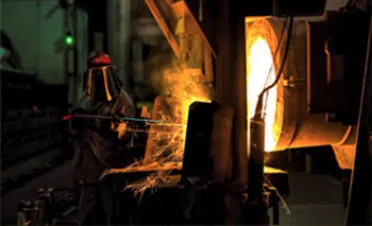High-Precision Investment Casting Techniques for Enhanced Manufacturing Efficiency and Quality
High Precision Investment Casting Revolutionizing Manufacturing
In the world of manufacturing, precision and accuracy are paramount. As industries strive for higher standards, high precision investment casting has emerged as a revolutionary process, allowing for the creation of intricate metal parts with exceptional dimensional accuracy and surface finish. This method not only enhances the performance of components but also significantly reduces waste, making it an eco-friendly alternative to traditional manufacturing methods.
Investment casting, also known as lost-wax casting, is a process that dates back thousands of years. However, advancements in technology have transformed it into a highly precise and efficient method. The process begins with creating a wax pattern of the desired part. This pattern is then coated with a ceramic shell, which is heated to remove the wax and harden the ceramic material. Once the shell is formed, molten metal is poured into the cavity left by the wax, resulting in a high-fidelity reproduction of the original pattern. After the metal cools and solidifies, the ceramic shell is broken away, revealing the cast part.
One of the main advantages of high precision investment casting is the ability to create complex geometries that would be difficult, if not impossible, to achieve with other manufacturing techniques. This complexity allows designers greater freedom in innovation, enabling the production of lightweight yet strong components that can withstand rigorous conditions. Industries such as aerospace, automotive, medical, and electronics greatly benefit from this capability, as they often require parts that are both intricate and high-performing.
Moreover, high precision investment casting leads to a superior surface finish compared to other casting processes. The fine details captured during the casting process reduce the need for extensive machining and finishing, thereby saving time and reducing costs. The excellent surface quality also enhances the aesthetic appeal of the parts, making them suitable for applications where appearance is crucial.
high precision investment casting

Another critical aspect of high precision investment casting is its efficiency. The process generates less waste than traditional machining methods, where excess material is cut away. With investment casting, nearly the entire volume of the molten metal is utilized, contributing to less scrap and a more sustainable manufacturing practice. As industries across the globe seek to minimize their environmental impact, this attribute makes investment casting increasingly attractive.
Furthermore, modernization in technology has amplified the benefits of high precision investment casting. Computer-aided design (CAD) and computer numerical control (CNC) technologies have improved pattern creation, enabling manufacturers to produce even more intricate designs with exact specifications. These innovations allow for faster prototyping and iterative design processes, so manufacturers can quickly adapt to market demands.
Quality control is another significant focus within the realm of high precision investment casting. Strict adherence to standards and thorough inspections throughout the process ensure that the final products meet rigorous quality requirements. As industries grow more competitive, the reliability and durability of components become critical, making investment casting a preferred choice for many.
In conclusion, high precision investment casting is revolutionizing the manufacturing landscape by offering unparalleled accuracy, design flexibility, and sustainability. As industries continue to evolve and demand more from their components, this method is likely to play a vital role in shaping the future of production. The combination of innovative technology and traditional craftsmanship in investment casting promises to deliver high-quality parts that meet the ever-growing challenges of modern engineering. Thus, embracing high precision investment casting will not only enhance manufacturing productivity but also contribute to a more sustainable and efficient industrial ecosystem.
-
Precision Sheet Metal Stamping Manufacturer | Fast & ReliableNewsAug.01,2025
-
OEM Sand Cast Pump Valve Fittings - Baoding Hairun Machinery And Equipment Trading Co., Ltd.NewsAug.01,2025
-
Custom OEM Impellers | High Efficiency & PrecisionNewsAug.01,2025
-
OEM Sand Cast Pump Valve Fittings - Baoding Hairun Machinery | Customization, Quality AssuranceNewsAug.01,2025
-
OEM Sand Cast Pump Valve Fittings - Baoding Hairun Machinery And Equipment Trading Co., Ltd.NewsAug.01,2025
-
OEM Sand Cast Pump Valve Fittings - Baoding Hairun Machinery And Equipment Trading Co., Ltd.NewsJul.31,2025















